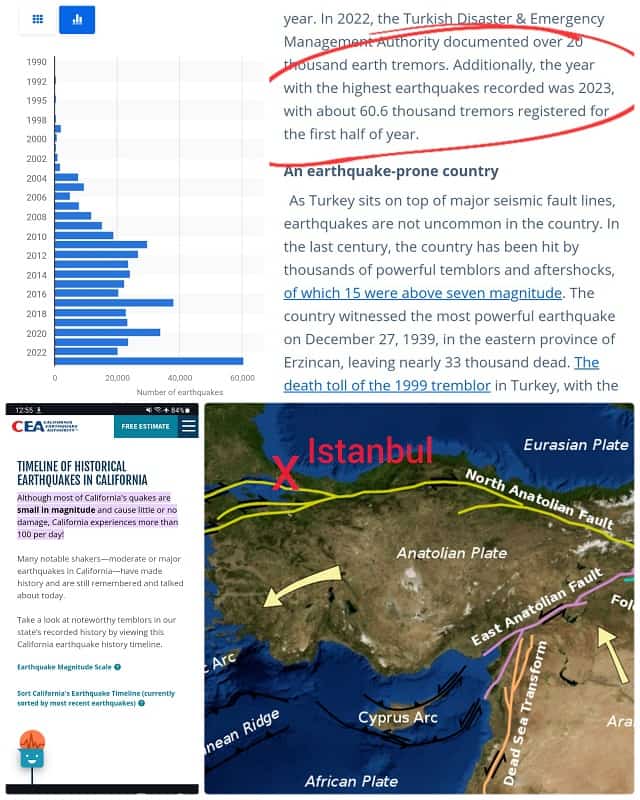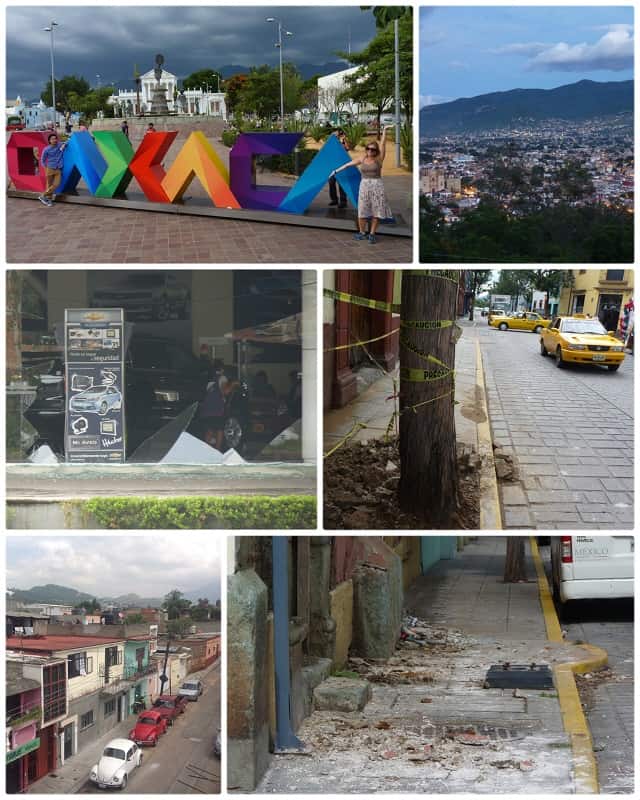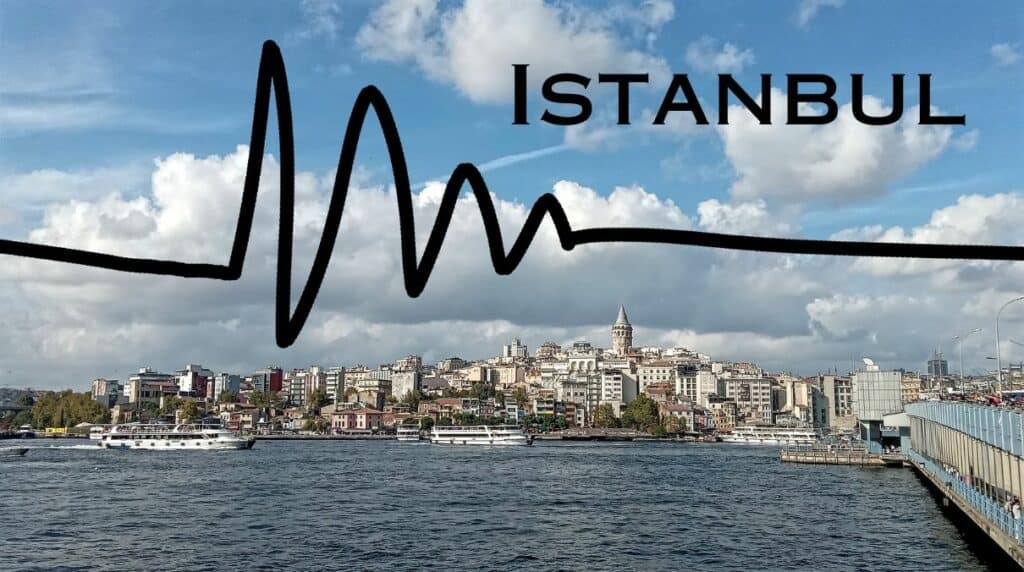Last Updated on October 25, 2024 by Ellen
48,000 dead.
That’s the estimate of lives lost in the February 6, 2023 earthquake in southern Türkiye (Turkey).
As seen in the stats below, Türkiye has been experiencing more earthquakes in recent years. The country sits on several major active fault lines. And while most tremors are undetectable to humans and cause no discernable damage, there have been more than 60,000 measurable quakes in just the first half of 2023!
That is an average of 328 earthquakes per day! More than three times the number measured daily in California.

At this moment we are sitting in a six-story apartment building in central Istanbul. Our Airbnb rental is on level two. Surrounding us are dozens of similar residential structures 60 – 80 – 100 years old? Who can trust the structural integrity of any of them.
Istanbul is a feast for the senses. An ancient crossroads of humanity with a current population of nearly 20 million all piled on top of each other. We’ve only been here four days, but it is perhaps the most historic, eclectic, and visually stunning place we have ever been. And also one of the most naturally dangerous.
Rarely in our travels have I had the inner feeling that we are exposed to a ticking time bomb — an earthquake. But honestly, I have that odd, concerning, gnawing sensation here.
I don’t want to exaggerate or be alarmist – but I’m not alone. A recent report predicts a grim and deadly future for this enormous enthralling metropolis.
The concern has led us to action. For the first time in all our global wandering, my wife and I conducted an ’emergency drill’. See the video below:
NOTICE: THIS IS A DRILL. NO EARTHQUAKE IS TAKING PLACE!
If you time it – as we did – you will see it took me 27 seconds to run out of our apartment building. I was hindered by unfamiliarity with our apartment door locks, darkness in the hall, the loss of one flip flop, and the operation of the building front door.
Additionally, as you see in the video, once I am outside, I’m left standing in a narrow street with old, four to six-story, concrete apartment buildings surrounding me. Hardly a ‘safe’ place if a trembling earth causes any collapses.
For the record, I later timed at 16 more seconds the length of time it took me to run up our narrow street to the nearest semi-open space which might provide refuge from crumbling/falling structures. Frightening.
After reviewing the first evacuation drill video, we decided to ‘try it again’ now that I was aware of the difficulties. The second earthquake test video is below.
NOTICE: THIS IS A DRILL. NO EARTHQUAKE IS TAKING PLACE!
This time I was able to completely exit the building in 19 seconds — an improvement of 8 seconds or 30%. A big difference; enough to save our lives? Who knows.
Presumably, my wife Ellen would be with me – adding some seconds back for the two of us. And again, to get to the neighborhood ‘open space’ would take us both at least another 16 seconds. Realistically, we’re looking at 40 to 45 seconds at a minimum to some relative safety.
Plus, in a worst/best case scenario, we’d then be standing there amidst the rubble in our ‘house clothes’, without shoes, no jackets, no money, no cell phones or chargers, no passports. Helpless and homeless. But hopefully alive.
Sorry for the buzzkill. I know it seems ridiculous/unnecessary/macabre. But on the most basic level – this is the reality for ALL of us.
An escape plan
Are you prepared? Do you have an escape plan for an emergency? Have you tried/tested/refined it? Starting today, we will be ready.
Embarrassingly, we have NEVER paid this subject any mind at all. And for folks like us – who live in old, different, unfamiliar accommodations every week or month – it seems even more critical. Plus, we worked in the local TV news business before our retirements; we both created broadcast stories urging our viewers to make such an emergency evacuation plan and practice it. Wow! Pathetic.

You would think we’d have made some kind of emergency planning part of our regular travel routine by now. While we lived all around Mexico in 2017 and 2018 we experienced a number of earthquakes. The worst was near midnight in Oxaca, Mexico on September 7, 2017. (Pics above).
In that instance, I was literally ‘on the throne’ when the shaking began. After about 15 seconds of intensifying movement, I began to get scared. I shouted to awaken Ellen. With the light fixtures swinging, we collected ourselves and stood there stupidly, dazed, waiting. After about 45 seconds in total, the trembling subsided. We then walked out onto our balcony/staircase to find all our immediate (and well-practiced) neighbors already safely out in the open common courtyard in their pajamas looking up at us.
That 8.1 magnitude quake was centered about 200 miles south of us, where dozens of people died. Our area suffered some broken windows, a power outage, fallen debris, some inconvenience.
Apparently it has taken our visit to incredible Istanbul to get our attention and finally heed our own words. Aside from the ‘practice escape’, we’ve assembled a ‘go bag’.
Where we’d normally find a hiding place for our passports, extra credit/debit/ATM cards, and emergency stash of US dollars and Euros – we now have these travel essentials in a small backpack discreetly tucked near our entry door.
Additionally, we have a second backpack nearby with sandals, sweatshirts, a fully charged spare old iPhone, extra cell phone cords, a power bank, etc; stuff we aren’t using every day now. Both bags could be grabbed in a moment if we did need to flee barefoot from our place in a panic.
The only other alternative exit would be faster but highly unappealing — leaping from our second story rear balcony. Here’s a video of what that option would entail.
NOTICE: THIS IS A DRILL. NO EARTHQUAKE IS TAKING PLACE!
You can see it could literally take about five seconds to be out of our rental unit by jumping. But then we’d likely be injured on the sidewalk below – unable to flee further and hoping nothing would fall from above. Yikes!
And if the quake turned out to be minor, we’d need serious medical treatment after the falls. (If I lived here permanently, I would devise some kind of rope/pulley/lift contraption that could be safely deployed in a few seconds.) Thus, if necessary, we’ve decided we’ll run out of the building as practiced – as long as the hallways are passable.
Safety first
In summary, if you’ve read this far, hopefully you will be motivated to craft and practice an emergency exit plan that works for you and your family – whether you are a global vagabond or a comfortable permanent resident somewhere.
If my exhortations and earthquake worries here aren’t enough – just look at some of the recent calamities in the news: Libyan dam failures, Morocco earthquake, Maui wildfires. In a world seemingly gone mad, such safeguards can never hurt.
We will be taking proper precautions as we travel in Türkiye, Israel, Jordan, and Egypt through the rest of 2023. Indeed, I have already started to pay closer attention to where the exit doors are on planes, trains, buses, ferry boats, theaters, malls, restaurants, etc. (And mentally I envision an emergency exit.) Years of riding buses and trains and ferries in developing nations inspired that safety measure.
Maybe it’s old age? Increasing common sense and wisdom? Acknowledgement of mortality? Whatever. As already stated, taking a few seconds or minutes to better understand one’s surroundings and potential dangers seems like a prudent approach to modern everyday life – and travel in particular.
Finally, lest you think all this hypothetical planning has been only dour and depressing — check out the final video below. Ellie and I doing the ‘safety dance’ in celebration of completing the emergency plans laid out above. And of course, we’ll continue to be out and about and enjoying every bit of awesome Istanbul while we can.
As always, be thankful and generous, happy trails & more beer.
Life is NOW!
Afraid of health care overseas? Don’t be!
Our special guide on global health care shows you:
- 7 easy steps to find the right doctors and hospitals
- Specific price examples for various medical services
- What to know about medical visas
- And more!
We go without travel health insurance, but many of the principles apply to those with coverage.

